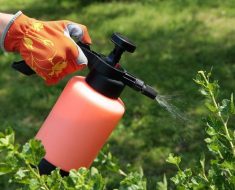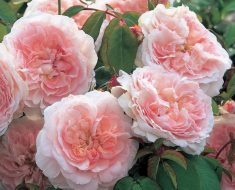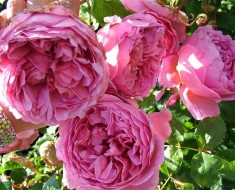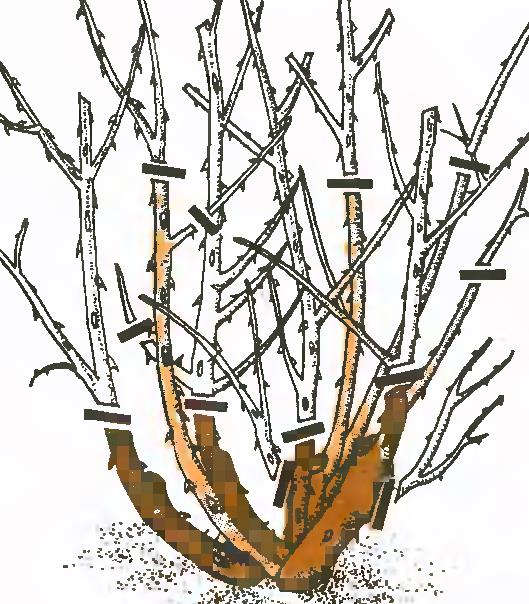The Yeoman,Rose D. Austin- one of the first in the collection of English roses. She has large – more than 10 cm – flowers, gathered in brushes of 3-5 pieces. In the catalog of the company D. Austin for sale it is not. She refers to the collection of roses. The English rose The Yeoman most likely was so named under the impression of the guardians of the Tower of London.
- Group – English Roses
- Main form – bush (srub)
- Height – 1 m
- Diameter – 90 cm
- Bush shape – oval-rounded
- Flower color – salmon-pink
- Number of petals – 50
- Flower shape – cup-shaped rosette, terry
- Flower size – 10 -12 cm
- Blossom form – brush
- Blossom type – repetitive
- Aroma – strong, myrrh
- Foliage – bright green, dense, weakly shiny, large
- Shoots – upright, strong, with thorns
- Features – intensity of aroma varies depending on weather conditions and time of day;
- Resistance to powdery mildew – medium
- Resistance to black spot – medium
- Cold resistance – up to -26 ºС
- Breeder – D. Austin
- Catalog name – Ausyeo
- Culture introduction year – 1969
- Soil – all types of
- pH – slight variations from neutral (5,6- 7.8)
- Drainage – obligatory
- Place – solar / partial shade
- Container – yes
- Stambe – yes
- Types of planting – mixed plantings, hedges, container garden
Caring for a rose The Yeoman like this:
- Planting for roses is the most important step of leaving them. The plant prefers sunny areas with well-arranged drainage. They grow on almost all types of soil. The ground must be loose to allow enough water and air to flow to the root system.
- Watering. Roses are watered as needed – from 10 liters of water to 1 adult shrub on average 2 – 3 times a week. In dry times, watering increases. If the rose The Yeoman grows in a container, then watering is usually more frequent. In both cases, it all depends on weather conditions.
- Fertilizers are fertilized at least 2-3 times during the growing season. It can be both mineral fertilizers and organic. Even roses give mineral complexes, which are introduced by spraying. For roses growing in pots, fertilizing increases, but the doses used are lower.
- Pruning roses depends on the group to which it belongs. They do pruning twice: in the summer, faded parts are constantly pruned to stimulate the emergence of new flowers, and in the fall, winter or early spring pruning is done to form the plant and prevent diseases or pests hiding under the bark of the plant. A potted English rose, The Yeoman, is also pruned.
- Loosening and weeding the soil around the rose bush is needed for air circulation, moisture and nutrients for the root system. To minimize your work, use mulching. This agrotechnical technique will help reduce the number of weeds and leave the soil moist longer. This applies to container roses.
- Shelter for the winter is especially necessary if the freezing temperatures are very low or in winter there are frequent long-term thaws that are abruptly replaced by minus. Be sure to cover the English rose The Yeoman growing in pots.
- Quality label ADR and roses
- Most fragrant roses
- 16 of the most important varieties of roses
- HOW TO APPLY FERTILIZER FOR ROSES
Enjoy your growing!








